Condition states
Depending on its management history, land that once supported wet sclerophyll forest may now support the same vegetation, fewer or no trees, a different vegetation type like lantana or camphor laurel, or no trees at all. These are different condition states for wet sclerophyll forest.
The ecological model shown on this page describes the different condition states for wet sclerophyll forest and what commonly leads to their formation. The target state to achieve maximum carbon is a wet sclerophyll forest with canopy eucalypts recruiting, and with either a shrubby (state 1) or grassy (state 2) understorey.
Shifts between these and other condition states occur in the following ways:
- Frequent, low intensity fire, or regular removal of woody understorey plants by other means, will encourage the shift of state 1 to state 2, and then to state 5 (wet sclerophyll forest with grassy understorey and no eucalypts recruiting).
- Repeated fires and/or selective harvesting are likely to reduce carbon stocks, and may result in the decline or loss of wet sclerophyll eucalypts (states 6–8).
- Increased densities of bell miners may also bring about the decline of wet sclerophyll eucalypts through Bell Miner Associated Dieback (state 9), which will also reduce carbon stocks.
- No fire or clearing may result in state 1 (wet sclerophyll forest with a rainforest) transforming into state 4 (wet rainforest). This is much more likely near rainforest seed sources.
- In most situations, the restoration of wet sclerophyll eucalypts will require the removal of competing woody plants (such as lantana) and the exposure of soil by fire or mechanical clearing.
- States without a seed source for wet sclerophyll eucalypts (states 7 and 8) will require direct seeding to enable the establishment and growth of canopy trees.
- Carbon stocks in a mature wet sclerophyll forest (states 1 and 2) will be maintained if there is adequate rainfall and enough patchy disturbance or gaps in the understorey vegetation to allow the new trees to replace older ones.
- Grazing and selective tree harvesting should be compatible with carbon farming as long as the dying mature trees are replaced at the same rate by new trees growing into the canopy.
- The tree density and structure of a reforestation site will depend upon the balance between trees, timber, pasture, biodiversity and any other preferences of the manager.
In Queensland, you can use patchy disturbance to trigger regeneration in wet sclerophyll forest rather than high intensity crown fires. High intensity fires should be avoided as they are highly hazardous, result in large losses of carbon from the ecosystem, and correspondingly large carbon emissions.
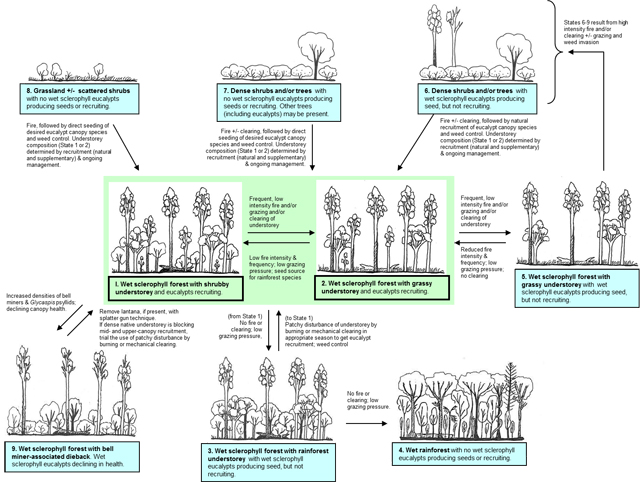

Note that the term ‘eucalypts’ includes all species of Eucalyptus, Syncarpia, Lophostemon and Corymbia that are canopy dominants of wet sclerophyll forest in Queensland.
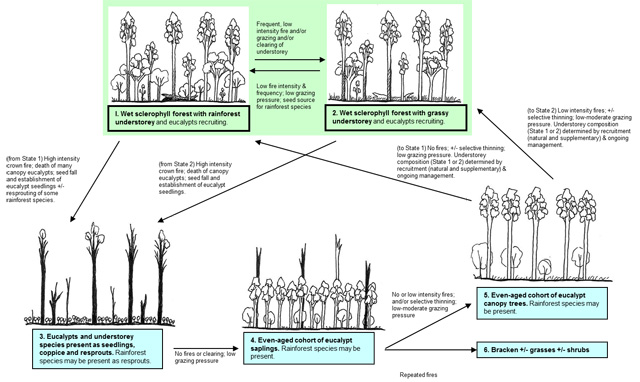

Identify your site’s condition state
To identify the condition state of your site, answer the following questions.
- Are wet sclerophyll eucalypts dying back and are high densities of bell miners present?
Yes—You probably have wet sclerophyll forest with Bell Miner Associated Dieback (state 9)
No—Go to question 2 - Are the seedlings of wet sclerophyll eucalypt species germinating and establishing?
Yes—You probably have either wet sclerophyll forest with shrubby understorey (state 1) or wet sclerophyll forest with grassy understorey (state 2)
No—Go to question 3 - Are wet sclerophyll eucalypts present and producing seed?
Yes—Go to question 4
No—Go to question 5 - Is there a dense layer (> 50% cover) of shrubs and/or mid-storey trees?
Yes—You probably have either wet sclerophyll forest with rainforest understorey (state 3) or dense shrubs and/or trees with wet sclerophyll eucalypts present and producing seed (state 6)
No—You probably have wet sclerophyll forest with grassy understorey (state 5) - Is there a dense layer (> 50% cover) of shrubs and/or mid-storey trees?
Yes—You probably have either wet rainforest (state 4) or dense shrubs and/or trees (state 7)
No—You probably have grassland +/- scattered shrubs (state 8)
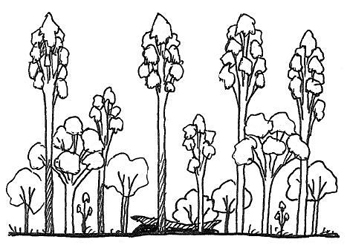
State 1—Wet sclerophyll forest with shrubby understorey
Seedlings of wet sclerophyll eucalypt species germinating and establishing.
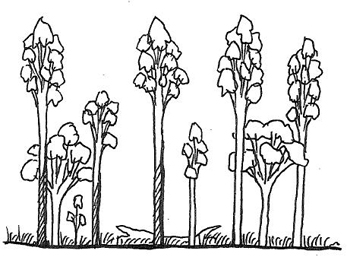
State 2—Wet sclerophyll forest with grassy understorey
Seedlings of wet sclerophyll eucalypt species germinating and establishing.
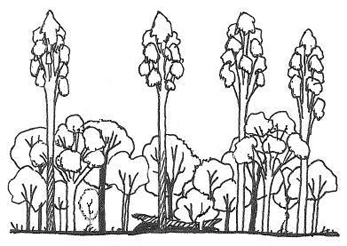
State 3—Wet sclerophyll forest with rainforest understorey
Wet sclerophyll eucalypts present and producing seed.
A dense layer (> 50% cover) of shrubs and/or mid-storey trees is present.
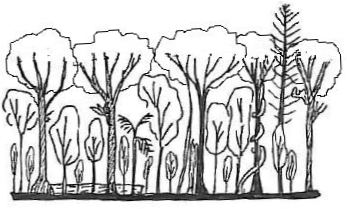
State 4—Wet rainforest
Wet sclerophyll eucalypts absent.
A dense layer (> 50% cover) of shrubs and/or mid-storey trees is present.
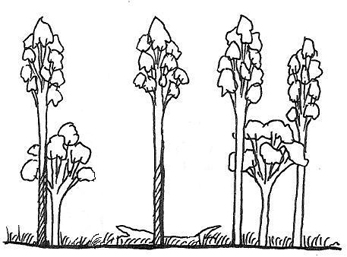
State 5—Wet sclerophyll forest with grassy understorey
Wet sclerophyll eucalypts present and producing seed.
A dense layer (> 50% cover) of shrubs and/or mid-storey trees is absent.
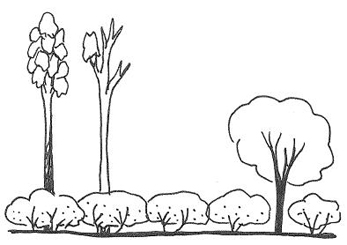
State 6—Dense shrubs and/or trees, with wet sclerophyll eucalypts present and producing seed.
Wet sclerophyll eucalypts present and producing seed.
A dense layer (> 50% cover) of shrubs and/or mid-storey trees is present.
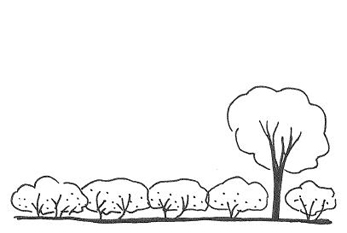
State 7—Dense shrubs and/or trees.
Wet sclerophyll eucalypts are absent.
A dense layer (> 50% cover) of shrubs and/or mid-storey trees is present.
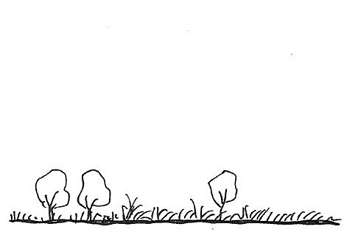
State 8—Grassland +/- scattered shrubs
Wet sclerophyll eucalypts are absent.
A dense layer (> 50% cover) of shrubs and/or mid-storey trees is absent
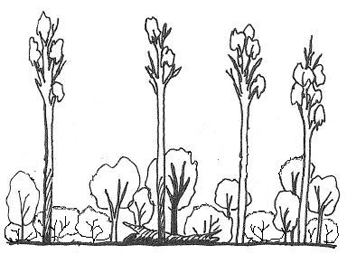
State 9—Wet sclerophyll forest with Bell Miner Associated Dieback
Wet sclerophyll eucalypts dying back, and high densities of bell miners present
Doesn’t seem to fit?
Check the vegetation of your site with the interactive map.
Main management issues
The main management issues for each condition state for wet sclerophyll forest are summarised below.
Some condition states have been grouped because their management issues are the same.
Condition state | Description | Main management issue |
|---|---|---|
1 & 2 | Wet sclerophyll canopy trees present and young trees establishing; shrubby or grassy understorey | Areas in these states should require little intervention to sustain or increase their carbon stocks |
3 & 6 | Wet sclerophyll canopy trees present and producing seed; dense layer of shrubs and/or mid-storey trees present | Reduction in shrub/mid-storey tree cover may be needed to allow establishment of young canopy trees |
5 | Wet sclerophyll canopy trees present and producing seed; no dense layer of shrubs and/or mid-storey trees | Areas in these states may require changes to grazing or fire regimes to allow establishment of young canopy trees to increase carbon stocks |
4 & 7 | Wet sclerophyll canopy trees absent or not producing seed; dense layer of shrubs and/or mid-storey trees present | Seed sources (and/or tubestock) will be required to restore canopy trees. Reduction in shrub/mid-storey tree cover may be needed to allow establishment of young canopy trees However, if rainforest trees are dominant, (state 4) this may provide similar carbon stocks to wet sclerophyll forest. The additional benefits of restoring wet sclerophyll canopy trees for carbon farming may be marginal |
8 | Wet sclerophyll canopy trees absent or not producing seed; no dense layer of shrubs and/or mid-storey trees | Seed sources (and/or tubestock) will be required to restore canopy trees |
9 | Wet sclerophyll canopy trees present, and affected by Bell Miner Associated Dieback | Reduction in shrub/mid-storey tree cover may be needed to remove habitat for miner birds and reverse symptoms of tree dieback |


